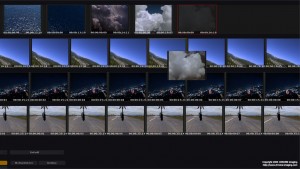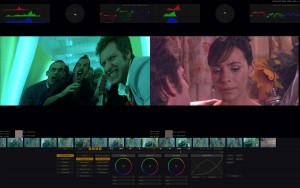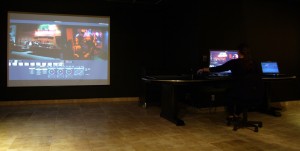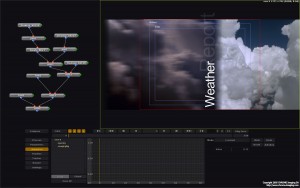What would you get if you crossed a toxik with a lustre and made it look like a flame? We asked Dan Tatut, the CEO of CHROME Imaging whoe are makers of the insanely interesting “Matrix compositor”. While initially speced to be a compositing system, the product is really aimed at the TVC DI market. The product is a major standalone turn-key system in the mold of Quantel, Discreet, 5D and the Sony Socratto. It was the shake up in that pack that lead to th
In thie week’s fxpodcast we speak with Dan Tatu of CHROME Imaging about their MATRIX compositing product,which provides color grading, compositing, painting, and more.
The Matrix Compositor may soon have a name change. The product is perhaps better described as a hybrid — an amazing mix of high end workstation and colour grading box.
The Matrix has:
Colour grading
Telecine controls
Compositing
Paint
Dust busting
Editing
Realtime film res playback
EDL – OMF – AAF (built on an XML code base)
8-10-16-32 floating point workspaces
Display and 3D LUTs – Kodak/Arri/Pandora
— and it comes with a tablet and a full grading panel.

If you thought after the demise of 5D, Socratto, Henry and Tremor, that Flame remains the only powerhouse expensive turnkey stand alone system…think again. Matrix has the compositing flexibility of Toxik or Shake in 8 bit, 16 bit or float. It has the direct telecine control of a da Vinci 2K – including Motion Detection / Scene Detection, for clip logging, and remote control of telecine opticals such as zoom, gamma, and RGB lights.
Matrix also has optical flow analysis for dust busting. Just when you think it is a grading station – it also has a 3D nodal compositing system – with 3D camera imports, models and lights. It plays film cineon files in realtime 2K, or 4K. The box even has a complete titling and subtitle system. The Matrix just may be one of the most interesting high end systems that has appeared in ages and on n paper this machine is awesome.

Yet questions remain. Relatively few have been sold so far. Is the market open to moving back towards stand alone black boxes, even if they have an open file system? At a time when only Autodesk is still successfully selling large scale black boxes and everyone else is moving to software solutions on off the shelf hardware with powerful GPU graphics cards, the question is: will Matrix break through in the minds of clients and reach the critical mass needed to be a successful product?

FreeStudios in Geneva and Labo Digital in Mexico think so. They are two of the facilities that are powering ahead with the Matrix in daily production.

The nodel compositing may be familar from some desktop applications, but it contains a full 3D compositor.
You can see the Matrix at IBC on two booths – for more information listen to the podcast for details.
